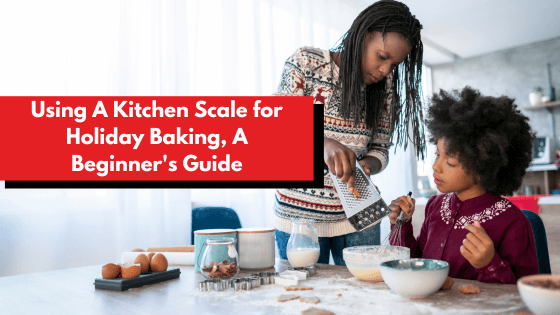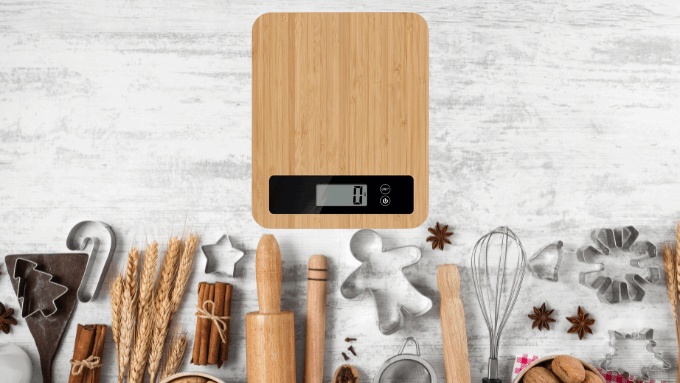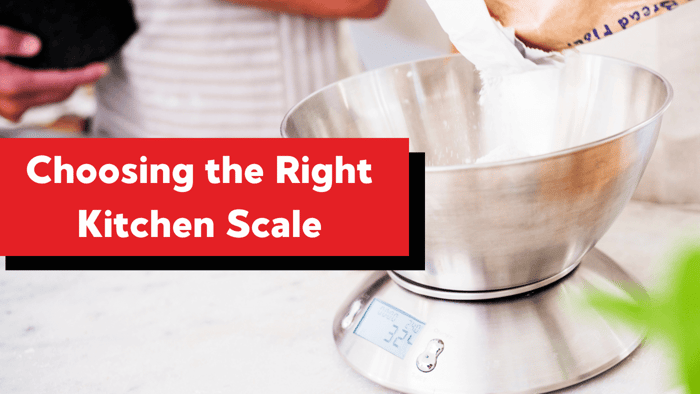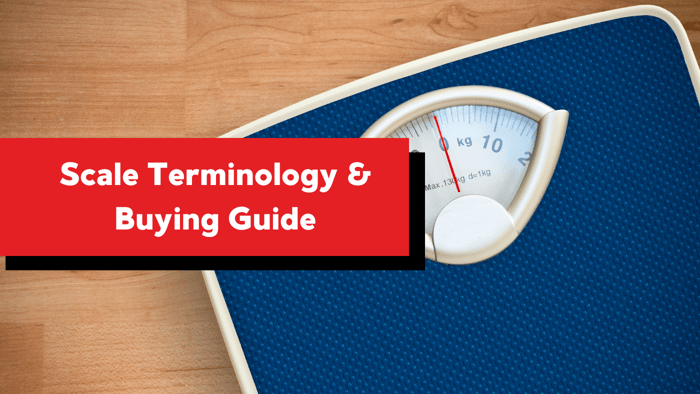
Using A Kitchen Scale for Holiday Baking, A Beginner's Guide
A Beginner’s Guide to Using Kitchen Scales for Holiday Recipes
Holiday baking is one of the season’s most cherished traditions, filling kitchens with the comforting aroma of cookies, pies, and cakes. While many of us are used to relying on measuring cups, baking enthusiasts and professionals know that using a kitchen scale can elevate your baked goods to the next level. If you're new to using a kitchen scale, this guide will walk you through the basics and help you master common holiday baking tasks like measuring flour and sugar with precision.

Why Use a Kitchen Scale for Holiday Baking?
Before diving into the how-to, let’s explore why a kitchen scale is a game-changer for baking:
Accuracy: Baking is a science, and small variations in ingredient measurements can lead to significant differences in texture and taste. A scale ensures consistency.
Consistency: If you’ve ever wondered why your cookies turn out differently each time, inaccurate measurements might be the culprit. Scales eliminate this guesswork.
Ease of Use: No more fumbling with multiple measuring cups. A scale simplifies the process.
Cleaner Process: Fewer dishes to wash! Measuring directly into the mixing bowl cuts down on cleanup.
Now that you’re convinced, let’s get started!
Step 1: Choosing the Right Kitchen Scale
Not all kitchen scales are created equal. When shopping for a scale, consider the following features:
Digital vs. Analog: A digital scale is easier to read and typically more accurate than analog models.
Tare Function: This feature allows you to reset the scale to zero after placing a container on it, making it easier to measure multiple ingredients in one bowl.
Units of Measurement: Ensure your scale can measure in grams, ounces, pounds, and milliliters for versatility.
Capacity: Look for a scale with a maximum weight capacity that suits your baking needs. Most scales handle up to 5kg (11lbs).
Step 2: Setting Up Your Scale
Place the Scale on a Flat Surface: For the most accurate readings, use your scale on a flat, stable surface. Avoid uneven countertops or wobbly tables.
Power It On: If your scale is digital, turn it on and wait for the display to show zero.
Select Your Unit of Measurement: Most recipes specify either grams or ounces. Use the unit button to switch to the required measurement.
Step 3: Measuring Dry Ingredients
Dry ingredients like flour, sugar, and cocoa powder are crucial in holiday baking. Here’s how to measure them correctly:
Place a Bowl or Container on the Scale: If your recipe requires mixing, use the bowl you’ll be mixing in to save time.
Tare the Scale: Press the tare button to reset the scale to zero with the container in place.
Add the Ingredient Slowly: Gradually add your flour or sugar to the bowl. Watch the display until you reach the required weight. If you overshoot, scoop some out until it’s correct.
Common Holiday Baking Tasks:
Measuring Flour: Scoop flour into the bowl without packing it down, as compressed flour can throw off measurements.
Measuring Brown Sugar: If your recipe specifies “packed” brown sugar, lightly press the sugar into your measuring bowl as you weigh it.
Step 4: Measuring Liquid Ingredients
Using a scale for liquid ingredients like milk, water, or oil ensures precision. Many scales can measure in milliliters, which is particularly helpful for recipes with metric measurements.
Use a Liquid-Appropriate Container: A measuring cup or jug works best for liquids.
Tare the Scale: Place the container on the scale and reset it to zero.
Pour Slowly: Add your liquid ingredient while keeping an eye on the scale’s display. Stop when you reach the desired weight or volume.
Pro Tip:
For sticky liquids like honey or molasses, lightly coat your container with oil or spray beforehand to make pouring and cleanup easier.
Step 5: Combining Multiple Ingredients in One Bowl
One of the best things about using a scale is the ability to measure multiple ingredients in a single bowl, minimizing dishwashing. Here’s how:
Tare Between Ingredients: After adding one ingredient, press the tare button to reset the scale to zero before adding the next ingredient.
Work Gradually: Add each ingredient slowly and carefully. If you overshoot, use a spoon to remove the excess.
Follow Recipe Order: Add ingredients in the order specified by your recipe to avoid cross-contamination or accidental mixing.
Step 6: Tips for Holiday Baking Success with a Scale
Keep Your Scale Clean: Wipe the surface after each use to avoid residue buildup.
Check Battery Life: Ensure your scale’s batteries are fresh before diving into a big baking project.
Double-Check Measurements: If you’re new to weighing ingredients, double-check by comparing to your measuring cups until you’re confident.
Use Reliable Recipes: Scaled measurements work best with recipes that provide weights rather than volumes.
Step 7: Troubleshooting Common Issues
Scale Shows “Error”: This usually happens if the weight exceeds the scale’s capacity. Use a larger container and measure in batches if necessary.
Inconsistent Measurements: Ensure your scale is on a flat, stable surface and that the batteries aren’t low.
Sticky Residue: For ingredients like powdered sugar or cocoa, use a dry pastry brush to clean the scale without damaging it.
Step 8: Holiday Recipes Perfect for Your Kitchen Scale
Ready to put your scale to use? Here are a few classic holiday recipes where precision matters:
Gingerbread Cookies: The perfect balance of spices, sugar, and molasses requires accurate measurements for that quintessential holiday flavor.
Holiday Shortbread: Achieve buttery perfection by weighing your butter and flour precisely.
Festive Fruitcake: With its combination of dried fruits, nuts, and batter, a scale ensures consistent portions and a balanced flavor.
Peppermint Brownies: Use a scale to measure cocoa powder and sugar for fudgy, indulgent brownies.
Meringue Cookies: Accurate weighing of egg whites and sugar is key to achieving the delicate, airy texture of meringues.
Conclusion
Using a kitchen scale for holiday baking may feel unfamiliar at first, but once you get the hang of it, you’ll wonder how you ever baked without one. Scales simplify the process, reduce mess, and ensure precision, making your holiday treats taste better and look more professional. Whether you’re crafting a gingerbread house, whipping up a batch of sugar cookies, or experimenting with new recipes, your scale is your best ally for holiday baking success. So go ahead, embrace the precision, and bake up a storm this holiday season!



